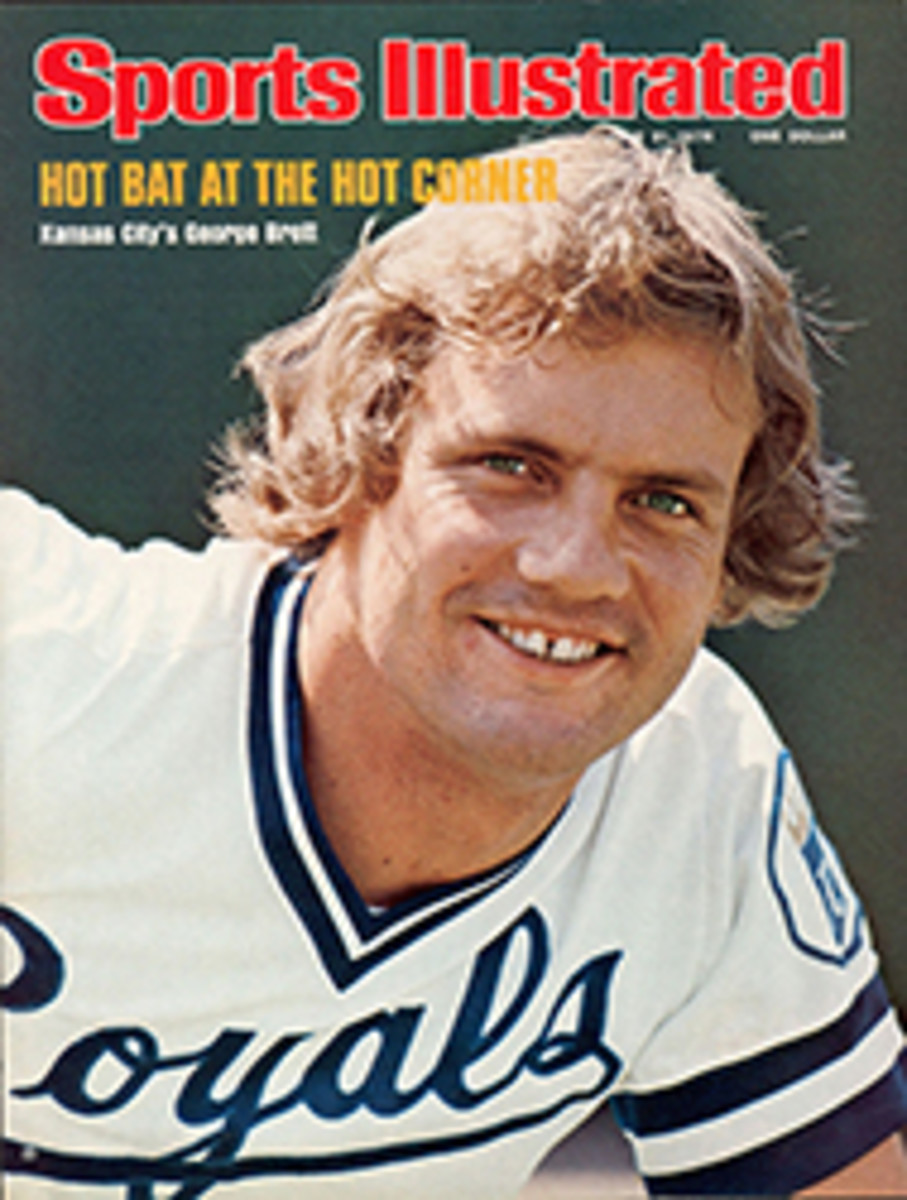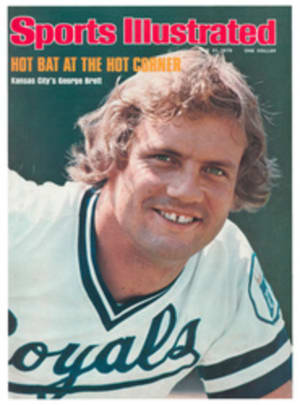
New but not unfamiliar
A successful idea, it has been said, is one that arrives at the proper time. To coin a corollary truth, some ideas pay off when least expected. Thus in 1969, armed with a blunt faith that seemed to defy logic, a New York engineer named John Bishop started the International Motor Sports Association as a refuge, in effect, for professional drivers who wanted to compete without having to sell their souls before the end of the first season.
At the time there were already USAC, SCCA, NASCAR and a variety of lesser sanctioning bodies offering competition on ovals, tri-ovals and road courses. To anyone with an ear to the track it would seem that Bishop's IMSA was about 20 years too late. And in its first year of full operation, 1970, the crepehangers appeared to be right: average attendance at an IMSA meeting was under 5,000 and the purse money for a racing weekend came to about $10,000. Today crowds normally exceed 25,000; the average purse, excluding contingency money and other sweetening, totals $50,000.
Bishop had worked from 1956 until 1969 as competition director and later executive director of the SCCA, so he was no dummy about racing. However, he makes no pretense that when he left the SCCA in an organizational dispute, he foresaw the need for another racing association. But, while lounging around not knowing how he would earn his living next, he got a call from Bill France Sr., then president of stock car racing's best-known sanctioning body, NASCAR. France believed there was room for more road racing, if the right format could be found. To drive the point home, he put up three-quarters of the capital that started IMSA off. IMSA succeeded, curiously, because the motor world into which it was born was badly crowded and cluttered. The decade preceding IMSA's inception was one of big, howling machines, and fierce and costly competition between the car manufacturers. While it seemed a very poor time for Bishop to be starting on a few shoestrings, by the end of the '60s there were undercurrents gathering force that favored low-budget racing of the IMSA sort. For one thing, the big cars were stinking up the air at a time when pollution was a growing concern. For another, despite the emphasis on big "muscle" cars in sales pitches, little foreign cars were taking a bigger slice of the U.S. market.
IMSA started at what proved to be the right time, but on the wrong foot. In the first two years Bishop tried a series for single-purpose racers commonly known as Formula Fords, and the most to be said for that enterprise is that the drivers fared marginally better than the men of Custer's 7th Cavalry did on the Little Bighorn. In the first heat of a race held in 1970 at Talladega International Raceway in Alabama, eight cars were totalled in one melee and five more a few laps later. Carson Baird, a good old North Carolina boy who is the current IMSA champion in small sedans, won the devastating heat at Talladega. "I somehow went through a cloud of racing car parts without being touched," he says. Summarizing the near demise of IMSA in its second year, Bishop recalls, "We'd eliminate sight or 10 cars at a crack. Whango! The machines were inherently too fast for where we raced—and much of the time they were at terminal speed so nobody had any power in reserve to help avoid crashes. Nobody was hurt, and it was a heck of a show, but not the kind I cared to produce."
IMSA now prospers with a much different program based on two principal series. One is called the Camel GT Challenge for extensively modified production-line sports cars. The other series, which has been called the Goodrich Radial Challenge Series, is for small sedans. From now on it will be known simply as the Radial Challenge. The B. F. Goodrich Company, after spending $1.5 million supporting the series as an adjunct to its radial tire promotion campaign, is pulling out. Goodyear, it seems, wants to use IMSA to promote a radial tire of its own and Goodrich, remembering how other manufacturers fared in the tire warfare of the '60s, is surrendering the field. As a parting shot, Bob Eisentrout, the marketing vice-president for Goodrich tires, said, "Where does an elephant sit? It sits where it wants to sit."
IMSA expected the GT races would be its main attraction and the sedan series the preliminary, as it were, but for a number of reasons the small cars have proved equally attractive to spectators and more so to drivers. Whereas a worthy machine for the GT series costs about $35,000, a car properly prepared for the radial series costs only about $8,000 and half as much to campaign. Although some tinkering is allowed in the smaller cars, notably with valve trains and suspensions, extensive reshaping of bodywork is prohibited. Consequently spectators can easily relate to the cars. An AMC Gremlin ripsnorting around in an IMSA race does not look like an outsize vacuum cleaner; it looks like the Gremlin in the show window back home. Because they are nimble but not too quick, the small cars can run in large packs. IMSA typically grids only 40 big cars in the GT series on a road course, but it can turn loose 60 or 70 of the little monsters.
To keep all kinds of cars active in his small-sedan game, John Bishop uses a practical, cold-blooded handicapping system. If one model seems too fast for the pack, it is in effect held back by some means such as a restrictor plate at the base of the carburetor. Sixty-six models of 24 different manufacturers are eligible to run in the sedan series. Forty-one models of 19 makes have actually been in it. Two weeks ago in the seventh race of the season on the Mid-Ohio road course, eight models of six different makes accounted for the first 10 places. Just about every machine—Pacer, Pinto or Colt, Datsun, Mazda or BMW, Gremlin, Hornet or Bobcat—has a chance to win, and therein lies the special strength of the game. Where other series have been spoiled because heavy-footed factory teams outspent the competition, that is not likely to happen in the IMSA sedan series, for there stands John Bishop with restrictor plate in hand.
There is one feature of modern IMSA-style stock car road racing that harks back to the dirt-tracking stock cars of legend. In IMSA today, as of yore, there is a profusion of "good old boys" from North Carolina. Though still prevalent, the breed is undergoing change. For example, Russ Norburn, manager of the successful Miller & Norburn team that runs a BMW 2002 on the IMSA circuit, attended prep school before going to Duke. His partner, Preston Miller, who serves as crew chief, went to North Carolina State, and both regular crew members have college degrees. The entire Miller & Norburn team wears shoes and occasionally neckties. None of the team eats squirrel regularly or hauls mountain spirits to the cities in a hard-sprung jalopy to supplement his income. Although somewhat different in such respects, the latter-day Carolina boys still have the arcane knack their forebears had for getting more "beans" out of a motor than other mortals can.
The genuine anomaly of the successful Miller & Norburn team is the driver, Nicholas Wesson Craw. Dear Lord, can you believe it? Nick Craw, the jockey for a Carolina stock car team, attended St. Paul's School in Concord, N.H., and graduated cum laude from Princeton. Although he did not get into the IMSA radial series until its third year, Craw leads in races won and is third in total points. Three years ago he tied for the points championship. Two years ago he was second, and last year he was first. This year he has been plagued figuratively by gremlins and literally by Gremlins, Colts and Mazdas, and stood only sixth when interim prizes were awarded at mid-season.
Craw is a smart, multi-faceted man, but he never lets this burden him or anybody. He has an easy boyish manner and takes the freakish luck of the racing game in stride. Beyond the ordinary griefs all drivers accept, the only injustice he has suffered in his driving career is of a trivial, biographical sort. Because his life has gone in several directions, Craw is a hard man to pigeonhole. Hasty news reports have stated that while at Princeton, Craw was captain of the hockey team, and that in his hunting days, he bagged a world record polar bear and mountain lion. In fact, at Princeton he played varsity hockey but was captain of the JVs (as well as captain of the sky-diving team). His polar bear and mountain lion were world-record class, not world records.
The biggest distortion still circulating about Craw concerns the two large fortunes that he definitely will not inherit. Because he went to St. Paul's and Princeton, one might conclude that he came from a family of means. Add to that the fact that he does race cars, and even in IMSA, that takes money. Craw is also a descendant of Daniel Wesson who began making guns with a man named Smith before the Civil War. By piling the foregoing evidence together, the press came around to describing Craw as "an heir of Smith & Wesson." Taking this distortion and making a real pretzel of it, one scribe called him the Wesson oil heir. In actuality the only stake Craw has in Smith & Wesson is a .32-caliber revolver that he bought retail in his hometown of Washington, D.C. The only rewarding oil in his life is not Wesson but Kendall. Kendall Oil soothes the troubled heart of his racing BMW, as well as helping support the Miller & Norburn racing program.
Craw did not get into racing until he was 32, an age when the eyes of many drivers have crow's feet. He maintains the itch had been in him since he was 11, when he saw a Formula I bash. If so, he suppressed it well. In his school years he earned money as a tree surgeon, ticket agent, wrangler and shipboard steward.
His first job after graduation was with Hope, the U.S. hospital ship that served the underprivileged world. For Hope he scrounged supplies and equipment from more than 900 U.S. concerns. By the time he quit Hope to go racing in 1968, he was Director of Operations. As a racing novice he was very successful in Formula B cars, and his professional career was moving along nicely when it suffered a prolonged diversion. In the slack part of the 1970 racing season he took what he thought would be a two-and-a-half-month consulting job with the Office of Economic Opportunity, but before he got back out of public service four years later he was not only a front runner on the IMSA circuit, but also director of the Peace Corps.
To judge by the record, he might have done well, moving onward and upward in government service. He remembers having only two major run-ins with government people. In a contretemps about the inadequacy of the Peace Corps in India, Craw and Daniel Patrick Moynihan, who was then ambassador, called each other ugly names. On another occasion, Ohio Congressman Wayne Hays wanted him to fire Donn Eisele, the astronaut, who was serving as Peace Corps director in Thailand. Craw refused. Racing was Craw's chosen profession, and not his avocation as the press often made it out to be in those government years. In 1974 he went back to racing exclusively, and will probably live happily ever after at it, provided those Gremlins, Colts and Mazdas stay off his back.
PHOTO
NICK CRAW: FROM PEACE CORPS INTO THE PITS

